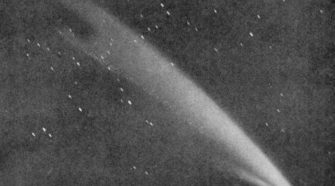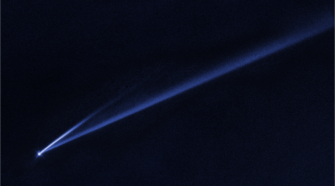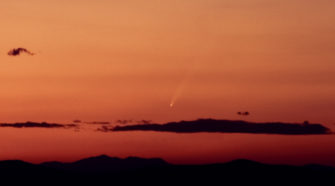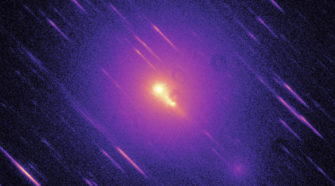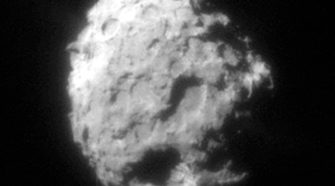Comet
Comet of the Week: The Daylight Comet of 1910
Perihelion: 1910 January 17.59, q = 0.129 AU In early 1910 the entire world – astronomers and lay public alike – awaited the imminent return of Comet 1P/Halley, which had been recovered the previous September and which was already detectable with moderate-sized telescopes. While Halley would go on to put on a spectacular display around …
Comet of the Week: (6478) Gault
Perihelion: 2020 January 2.79, q = 1.859 AU It has been obvious for several decades that the dividing line between “comets” and “asteroids” is, in a word, nebulous, and some facets of this will be explored in future “Special Topics” presentations. One group of objects that are included within this discussion were initially referred to …
Comet of the Week: McNaught C/2006 P1
Perihelion: 2007 January 12.80, q = 0.171 AU After the LIncoln Near-Earth Asteroid Research (LINEAR) program based in New Mexico became operational in early 1998, the discovery rate for both asteroids (including, certainly, near-Earth asteroids) and comets exploded dramatically. This trend has continued on up to the present day with the various subsequent surveys that …
Comet of the Week: Machholz C/2004 Q2
Perihelion: 2005 January 24.91, q = 1.205 AU Beginning with French astronomer Charles Messier and his contemporaries in the mid- to late 18th Century, the vast majority of comets were discovered visually by amateur astronomers who regularly swept the skies looking for these objects. While this means of comet discovery began to be supplanted by …
Comet of the Week: 81P/Wild 2
Comet 81P/Wild 2’s Perihelion: 2003 September 25.93, q = 1.590 AU Comet 81P/Wild 2 was discovered on January 6, 1978, by Swiss astronomer Paul Wild, who photographically patrolled the skies for several decades from the University of Bern. Throughout that time he discovered numerous asteroids and supernovae, as well as eight comets; he has the …

